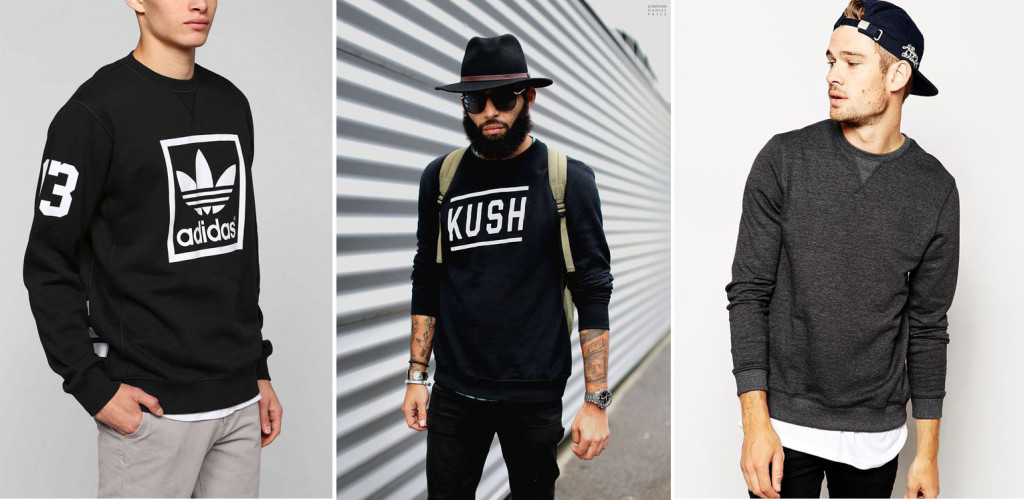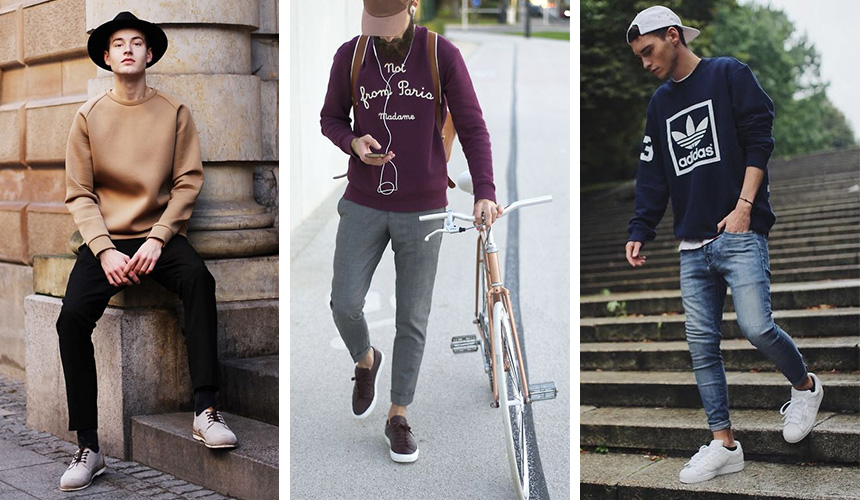Sweatshirt, hoodie, sweater and other types of sweaters
We are confident in your closet – a bunch of things that you call in one word "jacket". Among them are thin knitted, and knitted, and warm with fleece, and with a hood, and with kangaroo pockets, and those that fasten with a zipper, and those that you put on over your head, and elongated, and short – in a word, different. And all of them are for you «jacket» & hellip; Well, that's not right! Each of the listed subspecies has its own name: sweatshirt, longsleeve, jumper, sweater, pullover, sweatshirt, hoodie, pita, sweatshirt. Yes, they are similar to each other and are designed to perform the same task, but you can’t call things similar to each other in one word.
Therefore, in order for you to be in the subject and navigate in the mass of things similar to each other, we propose once and for all to figure out what really lies behind the names of these clothing models, and prepared an overview of the main types of sweaters. And let's start with thin knitted options, which are also commonly called long-sleeved T-shirts – it's a longsleeve and a sweatshirt.

Sweatshirts – it happened at the beginning of the last century, and they were exclusively training clothes for Olympic athletes. Today it is the "middle" between a knitted sweater and a sweatshirt, although everything is the same as before, in a sporty style. Their main differences are: a free cut that does not hinder movement, a round neckline, the absence of a hood, pockets and fasteners, as well as knitted cuffs on the sleeves and a placket at the bottom.
But the most important thing that not all men can appreciate, – it's material. When sewing sweatshirts, cotton jersey is usually used, and for insulated models – fabric on fleece or lining.
Transformed from its first appearance from sportswear to a casual piece of clothing, the sweatshirt – convenient and practical thing for all occasions – became the cornerstone of casual style. It can be worn with a coat, and with a leather jacket, and with sweatpants. If you want – you can wear it with a tailcoat!

In wartime, after the advent of sweatshirts, the era of comfortable wearable T-shirts began, which retained heat well. And if the classic cotton T-shirts with short sleeves – this is the base of the summer wardrobe, then knitted T-shirts with long sleeves or the so-called long sleeves – exclusively autumn or winter model, which is usually worn under a jacket, leather jacket or sweatshirt. That is, long sleeve – rather underwear, although it can be worn on its own, as an attribute of sportswear.
Everyone can wear a longsleeve: thin or obese guys, athletes or students… Doesn't matter. But remember – Long sleeve looks best with jeans.

Do not confuse if you see a thin long sleeve with a high collar in the store – it's a turtleneck. Such models are also sewn from cotton materials, they do not fit much, they also have a long sleeve. Turtleneck – a universal thing: you can wear it to work, to study, and to meet a girl. This option will especially solidly emphasize your bitsuha or pull away fat rushing out. This is someone lucky.
You can combine a turtleneck with a jacket, and with a cardigan or a mantle.
Along with turtlenecks, olympics became popular in the 50s – something between a sports jacket and a jacket with a zipper. As a rule, they are distinguished by a stand-up collar, cuffs on the sleeves and the presence of side set-in pockets. Olympic shorts do not have a hood – this is their main difference from other sports models, which we will talk about next. Modern products are sewn from polyester, nylon or elastane, which wick away moisture well, are lightweight, wrinkle-resistant, which is especially appreciated by athletes.

After the release of the film «Rocky» all the guys in big cities and in small towns began to wear hoodies, until then considered an attribute of hip-hop culture. Hoodie – it's not some Irish surname and it's not an insult. This is what most unknowingly call a "hoodie". Although if we turn to English, in which "hood" translated as "hood", it becomes clear that this is somewhat correct.
Outwardly, the hoodie is somewhat similar to the anorak – light jacket with a hood. But the anorak is usually sewn from nylon, and the hoodie – from jersey, with or without insulation – it already depends on what and for what season it is bought. Thanks to the soft knitted material, comfortable body temperature is well maintained in such clothes. And you can wear hoodies in winter under a down jacket or coat, and in spring under a jacket or windbreaker, and even in summer, when the nights are cool.

But the hoodie is considered the most controversial piece of clothing, because it is often considered one of the variations of the sweatshirt. And this is not unreasonable – outwardly, they are exactly the same, except for the pocket: in a hoodie it is see-through, and in a sweatshirt, although it is also located on the stomach, it is not. The fact is that it is customary to wear a hoodie over the head, because it does not have a fastener, but a sweatshirt does. So she divides the kangaroo pocket into two parts.
Actually, a sweatshirt is considered a sporty version of a sweater. Its main distinguishing features – the presence of a hood, a fastener in the entire length of the product or up to the chest line and large external pockets. This is not the case with sweaters.

If we are already talking about the sweater, then it's time to describe it. Sweater – This is the most common knitted thing for the winter. And although we are accustomed to call "sweater" everything that is knitted from threads, a real sweater is distinguished by a tight knit, no fasteners, a round neck and sometimes a high knitted collar. Remember: if the collar of a sweater is below 3 cm, then this is already a jumper – don't mix it up!
With a sweater, you won't need a scarf in winter, because your neck will always be covered. Therefore, you can wear it however you want and with whatever you want – it goes with everything! The main thing to remember is that if the sweater is bright colors, with prints or a large pattern, large knit or textured yarn, then it is better to choose the most neutral bottom and discreet shoes.

One of the variations of the sweater is considered to be a jumper: it is also knitted from woolen or semi-woolen threads and put on over the head, because it does not have fasteners. But unlike a sweater, a jumper has a round neckline. And if the neck of the sweater is triangular, then this is already a pullover (do not confuse it with the fitness exercise – «pullover»). It is usually worn over a shirt with a tie, but being young is allowed to go crazy, so wear a pullover on your naked body and combine with anything – your will!
All of the listed types of sweaters remain relevant. They can be worn with completely different things and in any situation – events where the same T-shirt or sweatshirt would be inappropriate simply do not exist.
